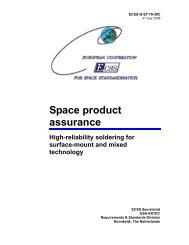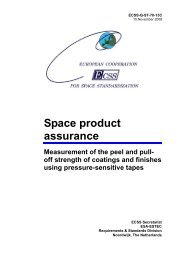An Investigation Into Ball Grid Array Inspection Techniques
An Investigation Into Ball Grid Array Inspection Techniques
An Investigation Into Ball Grid Array Inspection Techniques
You also want an ePaper? Increase the reach of your titles
YUMPU automatically turns print PDFs into web optimized ePapers that Google loves.
The laminography system also behaved similarly with this sample. The bridge around<br />
P 15/R15 was automatically detected. The missing balls at C5 and F2 were classified as<br />
insufficient or missing. None of the non-wetted pads were identified automatically. As<br />
before HP claim the new software has better performance.' Additionally, voiding in<br />
excess of 10% of joint area was found in joints at F5, G12, G13, 13, K14, L7, L8, M5,<br />
M7, Mil, M12, M14, M15, N7, N9, NIO, Nil, N12, P5, PII, P12, P13, R7, R8, RIO,<br />
R14. This threshold can be altered by the user.<br />
None of the systems were able to directly detect the hair-line fracture on ball F13.<br />
However, in this instance its presence could be inferred as the wetting angle of the ball<br />
to the pad was greatly increased due to the poor wetting during sample manufacture.<br />
The magnified Reichert microscope image in Figure 64 shows a number of small solder<br />
balls present around the bridge at P 15/R15. It should be noted that only the larger balls<br />
are visible on the X-ray images. Using higher magnification on the X-ray systems may<br />
have located these defects but this would have extended inspection time considerably.<br />
45<br />
<strong>Ball</strong> <strong>Grid</strong> <strong>Array</strong> <strong>Inspection</strong> <strong>Techniques</strong>
















